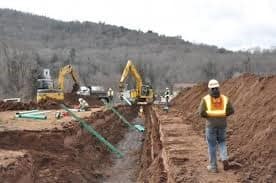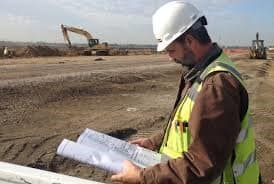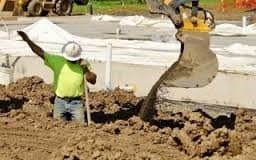Wait…I have to inspect my trenches?
 Turns out, you do! Most people out there only worry about inspecting trenches and excavations when their employees are getting ready to work in a trench that is at least 5 feet deep, but that’s not the only time they should be doing it.
Turns out, you do! Most people out there only worry about inspecting trenches and excavations when their employees are getting ready to work in a trench that is at least 5 feet deep, but that’s not the only time they should be doing it.
Let’s back up for a moment. Paragraph (a) of 29 CFR 1926.652 tells us when a protective system is needed for trenches. Specifically, 1926.652(a)(1)(ii) explains that when excavations are less than 5 feet deep and examination of the ground by a competent person indicates no potential cave-in, employees are safe to work in the trench. I think I may have just learned something! What this tells me is that I need to inspect all of my trenches—even the ones that are less than 5 feet deep. Took me twice to catch that part, so go ahead and read it again if you have to.
Can I get a second opinion?
Well, sure, but just be careful where you get it. Here’s an additional regulation [1926.651(k)(1)] that tells us everything we need to know: “Daily inspections of excavations, the adjacent areas, and protective systems shall be made by a competent person for evidence of a situation that could result in possible cave-ins, indications of failure of protective systems, hazardous atmospheres, or other hazardous conditions. An inspection shall be conducted by the competent person prior to the start of work and as needed throughout the shift. Inspections shall also be made after every rainstorm or other hazard-increasing occurrence. These inspections are only required when employee exposure can be reasonably anticipated.” Yikes, that’s a lot! We need to consider a lot of factors, like time, weather, and change. I guess this confirms that we need to start inspecting all of our trenches. Even the small ones.
What makes a person “competent”?
 Apparently, not just anyone can perform the inspections. That’s a bummer. The OSHA regulations reference a “competent person,” but what does that mean? The competent person is the onsite employee who 1.) can identify existing and predictable hazards in the surroundings; 2.) can identify working conditions that are unsanitary, hazardous, or dangerous to employees; and 3.) has the authority to take prompt corrective measures to eliminate them.
Apparently, not just anyone can perform the inspections. That’s a bummer. The OSHA regulations reference a “competent person,” but what does that mean? The competent person is the onsite employee who 1.) can identify existing and predictable hazards in the surroundings; 2.) can identify working conditions that are unsanitary, hazardous, or dangerous to employees; and 3.) has the authority to take prompt corrective measures to eliminate them.
While a team member may have the knowledge to recognize an unsafe condition or the hazards associated with the trench, he or she may not have the authority to take corrective action. Only the employer can define who the competent person is. So here’s your assignment: Go figure out who your competent people are when it comes to trenching and excavations, designate them, give them the authority they need, and make sure they are onsite. If you’re a general contractor, get this information from your subs.
What’s one common “pitfall”?
Don’t let your competent people make the all-too-common mistake of only inspecting trenches at 5 feet deep. Trenches collapse without warning. People die in 3 ½–4 foot trenches that have caved in. Don’t let that happen to your employees! And don’t get caught having your competent person not performing inspections just because the trench isn’t deep. That’s wrong. We’ll tell you that now so OSHA doesn’t have to tell you on the job site! As mentioned earlier, 1926.651(k)(1) requires that all trenches be inspected by the competent person daily. There is no depth specified, so inspect those trenches!
Can I get a recap?
- Trench inspection needs to be done DAILY, and sometimes more than daily. Of course, the inspection needs to be done before the day’s work starts, but don’t forget that it also nee
 ds to be done whenever there’s a hazard-increasing event, like a rainstorm.
ds to be done whenever there’s a hazard-increasing event, like a rainstorm. - A team member can be a competent person, but the company has to officially designate them as such.
- The competent person needs to inspect ALL trenches, even trenches that are less than 5 feet deep.
What about those little 1-foot trenches? Yep, those, too. After all, 1 cubic foot of soil weighs 74-110 pounds (depending on if it’s wet or dry). Hence the need for all these rules and regulations.

 ds to be done whenever there’s a hazard-increasing event, like a rainstorm.
ds to be done whenever there’s a hazard-increasing event, like a rainstorm.